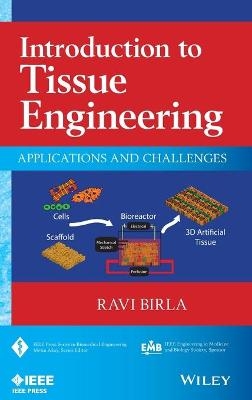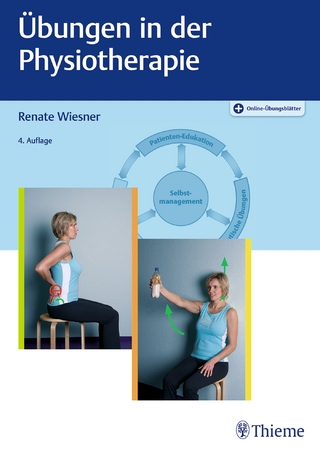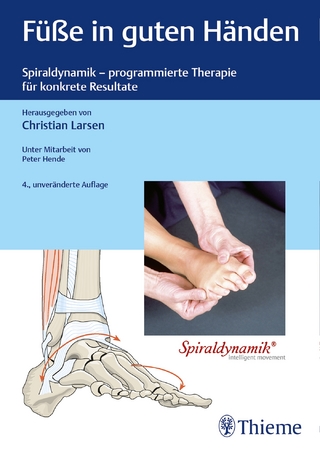
Introduction to Tissue Engineering
Wiley-IEEE Press (Verlag)
978-1-118-62864-5 (ISBN)
A comprehensive reference and teaching aid on tissue engineering—covering everything from the basics of regenerative medicine to more advanced and forward thinking topics such as the artificial liver, bladder, and trachea
Regenerative medicine/tissue engineering is the process of replacing or regenerating human cells, tissues, or organs to restore or establish normal function. It is an incredibly progressive field of medicine that may, in the near future, help with the shortage of life-saving organs available through donation for transplantation.
Introduction to Tissue Engineering: Applications and Challenges makes tissue engineering more accessible to undergraduate and graduate students alike. It provides a systematic and logical eight-step process for tissue fabrication. Specific chapters have been dedicated to provide in-depth principles for many of the supporting and enabling technologies during the tissue fabrication process and include biomaterial development and synthesis, bioreactor design, and tissue vascularization. The tissue fabrication process is further illustrated with specific examples for liver, bladder, and trachea. Section-coverage includes an overall introduction of tissue engineering; enabling and supporting technologies; clinical applications; and case studies and future challenges.
Introduction to Tissue Engineering:
Presents medical applications of stem cells in tissue engineering
Deals with the effects of chemical stimulation (growth factors and hormones)
Covers current disease pathologies and treatment options (pacemakers, prosthesis)
Explains bioengineering, design and fabrication, and critical challenges during tissue fabrication
Offers PowerPoint slides for instructors
Features case studies and a section on future directions and challenges
As pioneering individuals look ahead to the possibility of generating entire organ systems, students may turn to this text for a comprehensive understanding and preparation for the future of regenerative medicine.
RAVI BIRLA, PHD, is Associate Professor in the Department of Biomedical Engineering at the University of Houston. Dr. Birla’s research focuses on the fabrication of 3D cardiovascular constructs, including bioengineering 3D artificial heart muscle, cell-based cardiac pumps, tissue engineering ventricles, and bioartificial hearts.
Preface xiii
Acknowledgments xv
List of Abbreviations xvii
Important Terminology and Concepts xxi
1 Introduction to Tissue Engineering 1
1.1 Introduction to Tissue Engineering, 2
1.2 Chronic Shortage of Donor Organs, 3
1.3 The Tissue Engineering Paradigm, 4
1.4 Definition of Tissue Engineering, 5
1.5 Process of Bioengineering 3D Artificial Tissue, 9
1.6 Design Principles for Tissue Engineering, 12
1.7 Building Blocks of Tissue Engineering, 14
1.8 Scientific and Technological Challenges, 15
1.9 Functional Assessment of Artificial Tissue, 16
1.10 Seminal Papers in Tissue Engineering, 18
1.11 Applications of 3D Artificial Tissue, 20
1.12 Two-Dimensional Versus Three-Dimensional Culture, 22
1.13 Integration of Core Technologies, 22
1.14 Growth of Tissue Engineering, 24
1.15 Disciplines in Tissue Engineering, 26
1.16 Tissue Engineering and Related Fields, 28
Summary, 33
Practice Questions, 34
References, 35
2 Cells for Tissue Engineering 40
2.1 Cells and Tissue Engineering, 41
2.2 Cell Structure and Function, 43
2.3 The Dynamic Extracellular Matrix, 47
2.4 Cell Signaling, 48
2.5 Cellular Junctions, 50
2.6 Mammalian Tissue and Artificial Tissue, 52
2.7 Cell Sourcing, 52
2.8 The Cell Transplantation Process, 55
2.9 Cells for Cell Transplantation, 58
2.10 Mode of Action of Cells During Cell Transplantation, 59
2.11 Cell Transplantation and Tissue Engineering, 60
2.12 The Cell Culture Process, 61
2.13 Applications of Monolayer 2D Cell Culture, 64
2.14 Cell Culture Versus Tissue Engineering, 65
2.15 Introduction to Stem Cell Engineering, 66
2.16 Human Embryonic Stem Cells, 70
2.17 Induced Pluripotent Stem Cells, 71
2.18 Adult Stem Cells, 72
Summary, 72
Practice Questions, 73
References, 74
3 Biomaterials for Tissue Engineering 84
3.1 Definition of Biomaterials, 85
3.2 Scheme for Biomaterial Development, 88
3.3 Historical Perspective on Biomaterials, 90
3.4 Tensile Properties, 92
3.5 Modulation of Tensile Properties, 95
3.6 Material Degradation, 97
3.7 Biocompatibility, 100
3.8 Biomimetic Biomaterial, 104
3.9 Classification of Biomaterials, 106
3.10 Biomaterial Platforms, 108
3.11 Smart Materials, 113
3.12 The Dynamic Extracellular Matrix, 114
3.13 Idealized Biomaterial, 116
Summary, 118
Practice Questions, 119
References, 121
4 Tissue Fabrication Technology 130
4.1 Introduction to Tissue Fabrication Technologies, 131
4.2 Self-Organization Technology, 133
4.3 Cell Sheet Engineering, 135
4.4 Scaffold-Based Tissue Fabrication, 137
4.5 Cell and Organ Printing, 140
4.6 Solid Freeform Fabrication, 142
4.7 Soft Lithography and Microfluidics, 143
4.8 Cell Patterning, 145
4.9 Idealized System to Support Tissue Fabrication, 148
Summary, 149
Practice Questions, 150
References, 151
5 Vascularization of Artificial Tissue 156
5.1 Introduction, 157
5.2 Seminal Publications in Angiogenesis Research, 159
5.3 Vascularization Defined, 160
5.4 Molecular Mechanism of Vasculogenesis, 161
5.5 Molecular Mechanism of Angiogenesis, 163
5.6 Molecular Mechanism of Arteriogenesis, 164
5.7 Therapeutic Angiogenesis, 166
5.8 Tissue Engineering and Vascularization, 167
5.9 Conceptual Framework for Vascularization During Artificial Tissue Formation, 169
5.10 In Vivo Models of Vascularization, 172
5.11 Idealized Vascularization Strategy for Tissue Engineering, 174
5.12 Flow Chart and Decision Making, 176
5.13 Biologically Replicated Vascularization Strategies, 179
5.14 Biologically Mediated Vascularization Strategies, 181
5.15 Biologically Inspired Vascularization Strategies, 184
Summary, 186
Practice Questions, 187
References, 188
6 Bioreactors for Tissue Engineering 193
6.1 Introduction to Bioreactors, 194
6.2 Bioreactors Defined, 195
6.3 Classification of Bioreactors, 197
6.4 Design Considerations, 200
6.5 Idealized Bioreactor System, 202
6.6 Bioreactors and Tissue Engineering, 205
6.7 Bioreactors for Mammalian Cell Culture, 207
6.8 Bioreactors for Scaffold Fabrication, 209
6.9 Bioreactors for Scaffold Cellularization, 212
6.10 Perfusion Systems, 215
6.11 Bioreactors for Stretch, 219
6.12 Electrical Stimulation, 221
Summary, 226
Practice Questions, 227
References, 230
7 Tracheal Tissue Engineering 237
7.1 Structure and Function of the Trachea, 238
7.2 Congenital Tracheal Stenosis, 240
7.3 Genetic Regulation of Tracheal Development, 241
7.4 Post Intubation and Post Tracheostomy Tracheal Stenosis, 243
7.5 Treatment Modalities for Tracheal Stenosis, 245
7.6 Design Considerations for Tracheal Tissue Engineering, 247
7.7 Process of Bioengineering Artificial Tracheas, 247
7.8 Tissue Engineering Models for Artificial Tracheas, 250
7.9 Tracheal Tissue Engineering—An Example of a Clinical Study, 253
7.10 Tracheal Tissue Engineering—A Second Example of a Clinical Study, 255
Summary, 258
Practice Questions, 258
References, 260
8 Bladder Tissue Engineering 265
8.1 Bladder Structure and Function, 266
8.2 Neurogenic Bladder Dysfunction, 267
8.3 Surgical Bladder Augmentation, 269
8.4 Development of the Urinary Bladder, 270
8.5 Design Considerations for Bladder Tissue Engineering, 270
8.6 Process of Bioengineering Artificial Bladders, 271
8.7 Cell Sheet Engineering for Bladder Tissue Engineering, 273
8.8 Small Intestinal Submucosa (SIS) for Bladder Tissue Engineering, 275
8.9 Plga as a Biomaterial for Bladder Tissue Engineering, 278
8.10 Acellular Grafts for Bladder Tissue Engineering, 280
8.11 Organ Models for Bladder Tissue Engineering, 283
8.12 Clinical Study for Bladder Tissue Engineering, 284
Summary, 285
Practice Questions, 286
References, 288
9 Liver Tissue Engineering 295
9.1 Structure and Function of the Liver, 296
9.2 Acute Liver Failure, 297
9.3 Liver Transplantation, 299
9.4 Liver Regeneration, 301
9.5 Liver Development, 302
9.6 Design Considerations for Liver Tissue Engineering, 303
9.7 Process of Bioengineering Artificial Liver Tissue, 303
9.8 Stem Cells for Liver Tissue Engineering, 305
9.9 Surface Patterning Technology for Liver Tissue Engineering, 307
9.10 Biomaterial Platforms for Liver Tissue Engineering, 309
9.11 Fabrication of 3D Artificial Liver Tissue, 309
9.12 Vascularization for Liver Tissue Engineering, 311
9.13 Bioreactors for Liver Tissue Engineering, 312
9.14 Spheroid Culture for Liver Tissue Engineering, 313
Summary, 314
Practice Questions, 315
References, 317
Index 323
| Erscheint lt. Verlag | 15.8.2014 |
|---|---|
| Reihe/Serie | IEEE Press Series on Biomedical Engineering |
| Sprache | englisch |
| Maße | 160 x 239 mm |
| Gewicht | 748 g |
| Themenwelt | Medizin / Pharmazie ► Medizinische Fachgebiete |
| Medizin / Pharmazie ► Physiotherapie / Ergotherapie ► Orthopädie | |
| Technik ► Medizintechnik | |
| Technik ► Umwelttechnik / Biotechnologie | |
| ISBN-10 | 1-118-62864-0 / 1118628640 |
| ISBN-13 | 978-1-118-62864-5 / 9781118628645 |
| Zustand | Neuware |
| Informationen gemäß Produktsicherheitsverordnung (GPSR) | |
| Haben Sie eine Frage zum Produkt? |
aus dem Bereich


